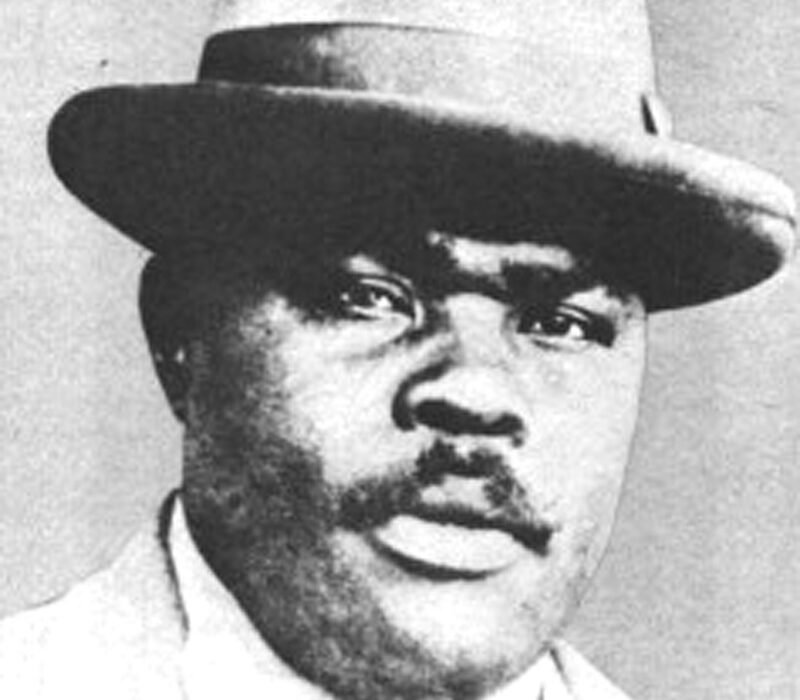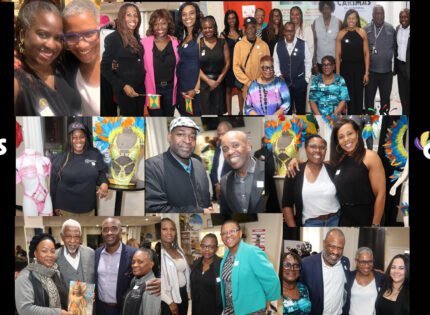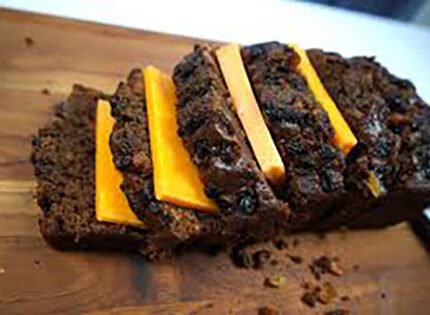Quebec’s Toponyny Commission cast aspersions
Contact Staff
In 1960, Marcus Garvey was designated Jamaica’s first national hero.
And today, decades after his death, his memory lives on in the names of schools and other landmarks across Africa, the Caribbean, Europe and even in the United States, where his bust stands proudly at Halls of Heroes of the Organization of American States in Washington, DC.
The organization he founded in 1914, The Universal Negro Improvement Association and African Communities (Imperial) League (UNIA-ACL) still stands as a source of inspiration to millions of dispirited people around the world.
The economic nationalism that he advanced during a period when Blacks were mostly disenfranchised and on the frontline of injustice and abuse, and only of the original advocates of pan Africanism, places him among the most advanced thinkers of his time.
On a visit to Jamaica in 1965, Dr. Martin Luther King Jr. saluted Marcus Garvey with these words:
“He was the first man of color to lead and develop a mass movement. He was the first man on a mass scale and level to give millions of Negroes a sense of dignity and destiny. And make the Negro feel he was somebody.”
Someone has to call the people at Quebec Toponymy Commission also at the Borough Mayor and Councilors’ Office of NDG/Cote des Neiges and tell them to apologize to the members of the Montreal Chapter of the UNIA and to all Black people for attempting to discredit the name of one of the greatest leaders of African descent that the world has come to know.
There was an initial request from the UNIA, which is responsible for making recommendations to the government on the changes of names of places and landmarks across the province, to have a major roadway in the Montreal area named after Garvey.
The commission suggested that the UNIA speaks with Borough Mayor and Councillor Office of NDG/Cote des Neiges, which they did.
“We had a very cordial and encouraging meeting with the mayor,” says Mervyn Weekes of the UNIA. “Our initial request was to have Decarie Boulevard named after Garvey, but was warned that might be highly unlikely, so we were encouraged to look at other options.”
However, that meeting was five months ago, and we have been for the mayor’s office to get back to us.
Here’s what came back to them: The Toponomy Commission informed Mayor Copeman that they find that Marcus Garvey is too controversial for inclusion in the bank of historic names for tributes.
They cite a fraud conviction in 1922 and a pact with segregationists in 1927 to deport 12 million African-Americans to Liberia as incriminating factors.
The Commission points out that, today, they have the responsibility to ensure that selected names will not sow divisions within our community and that, in the case of the Caribbean community, you would be better served by honoring a distinguished citizen of your community who did their good works on the territory of Montreal.
By that response it’s obvious that the people at the Toponymy Commission and to a certain extent the Borough Mayor and Councilor’s Office of NDG/Cote des Neiges, just don’t know better, and opted for a response that can only be described as ignorant.
And it’s not unlike most institutions in this province, that know very little about what they see as marginal communities of Quebec and show no willingness to inform themselves.
To cite Garvey as a criminal and a segregationist is height of ignorance.
It doesn’t take much research to learn about the Jamaican-born political leader who exemplified himself in the fields of publishing, journalism and as an entrepreneur.
Born in St. Ann’s Bay on August 11, 1887, Marcus Mosiah Garvey was a voracious reader as a child.
At an early age he travelled across the Caribbean, Latin America and eventually to London working various jobs, including as an editor of a pan-Caribbean newspaper.
His travels opened up to him a world where the plight of the Black man was universal.
Upon his return to Jamaica in 1914, he founded the UNIA, a movement he intended “to embrace all Black humanity.”
It wasn’t long before the organization was primed for a more worldwide posture. The first division outside of Jamaica was launched in New York in 1917.
In the USA, a program to improve the conditions of ethnic Africans “at home and abroad” under UNIA auspice, the “do-for-self” and principles of self-actualization of the movement resonated with Blacks across the country.
After years of building the organization in the USA, by 1921 Garvey was able to attract more than 50,000 people to Madison Square Garden for the UNIA’s International Convention.
Two years earlier, Garvey had put in place his economic plan and set up several businesses. The Black Star Line of Delaware was launched in 1919. They bought the S.S. Yarmouth and had its rechristening as the S.S. Frederick Douglass in September that year. They also launched a winery, using grapes harvested only in Ethiopia.
The shipping line was particularly successful in its first year, bringing more than half a million dollars in the sale of stocks.
The Negro Factories Corporation was a lofty ideal intended to develop the businesses that would manufacture every marketable commodity in industrial centers in the U.S., as well as in Central America, the West Indies, and Africa.
He also intended to set up grocery chains, restaurants, publishing houses and other businesses.
The UNIA also launched the Liberia program in 1920, intended to build schools, universities, industrial plants and railroads as part of an industrial base from which to operate.
The Black Star Line was to assist in transporting Blacks back to Africa in keeping with the aim of the association. To that end
America panicked at the prospect of the mass migration of Blacks back to Africa, to which Garvey assured them: “We do not want all the Negroes in Africa. Some are no good here, and naturally will be no good there.”
Pressure from US and European interests who had their eyes set on Liberia forced Garvey to abandon his Africa project. He was a marked man.
The gears were put in motion to have him deported.
Eventually, a laughable charge of mail fraud was brought against him in connection with sales of Black Star Line stocks. In 1923 Garvey was found guilty and sentenced to five years in jail. President Calvin Coolidge eventually commuted his sentence, but he was deported to Jamaica in November 1927.
On June 10, 1940, Garvey died in London, England.
In its entirety, Garvey’s story continues to be one of inspiration for millions of Blacks around the world and he remains one our most celebrated leaders.
Around the world his name is memorialized on landmarks and dedications.
In Jamaica, Garvey’s birthplace, 32 Market Street, St. Ann’s Bay, is dedicated as a site of national importance. And his face is on 20-dollar and 25 cent coins.
In Africa, several streets and institutions in Nigeria, Kenya and Ghana bear his name.
In the USA, there is a park in Harlem, New York and a Branch of the New York Public Library.
In England, there’s a street in Brixton and a Marcus Garvey Public Library in North London.
And in cities across Canada, Marcus Garvey Day is celebrated on August 17 every year.













